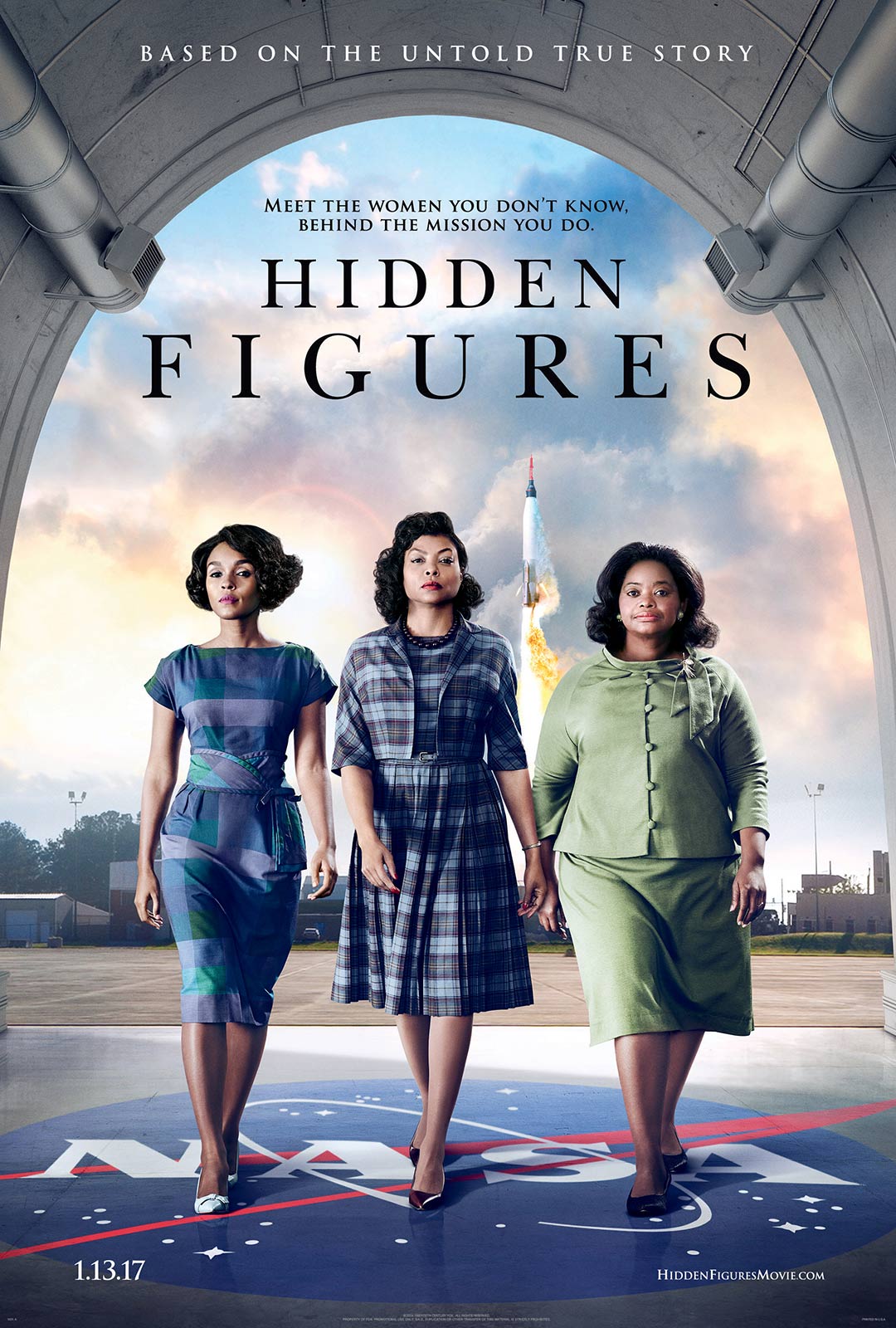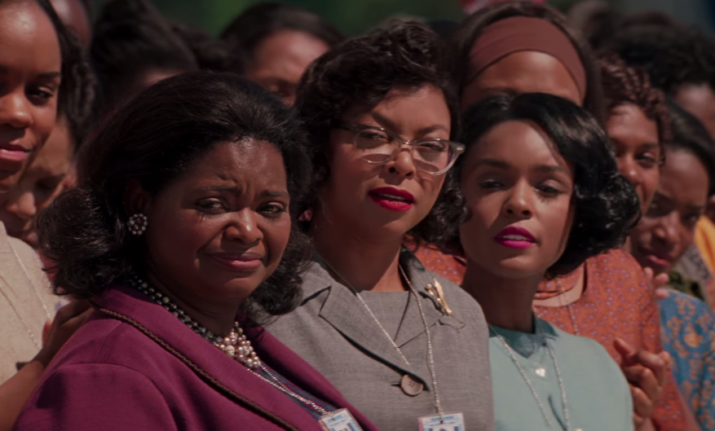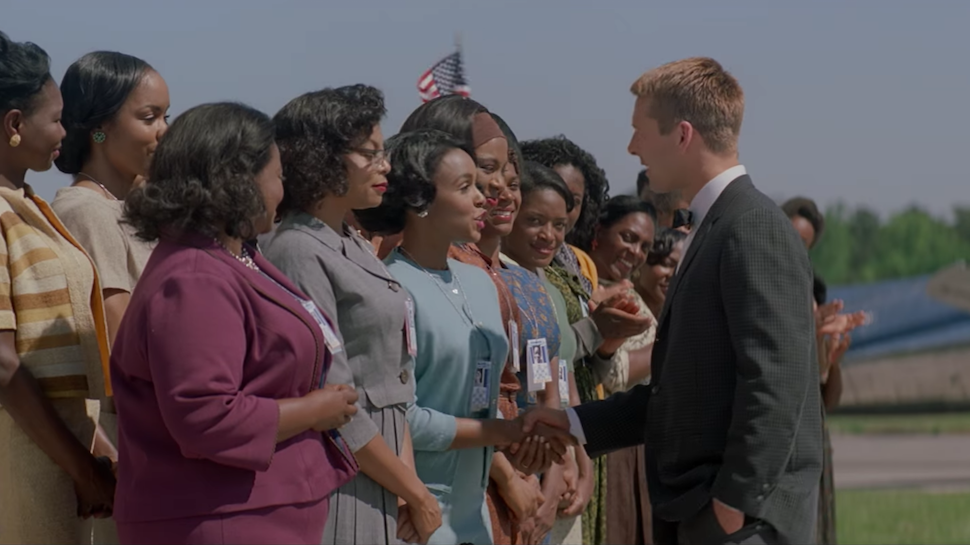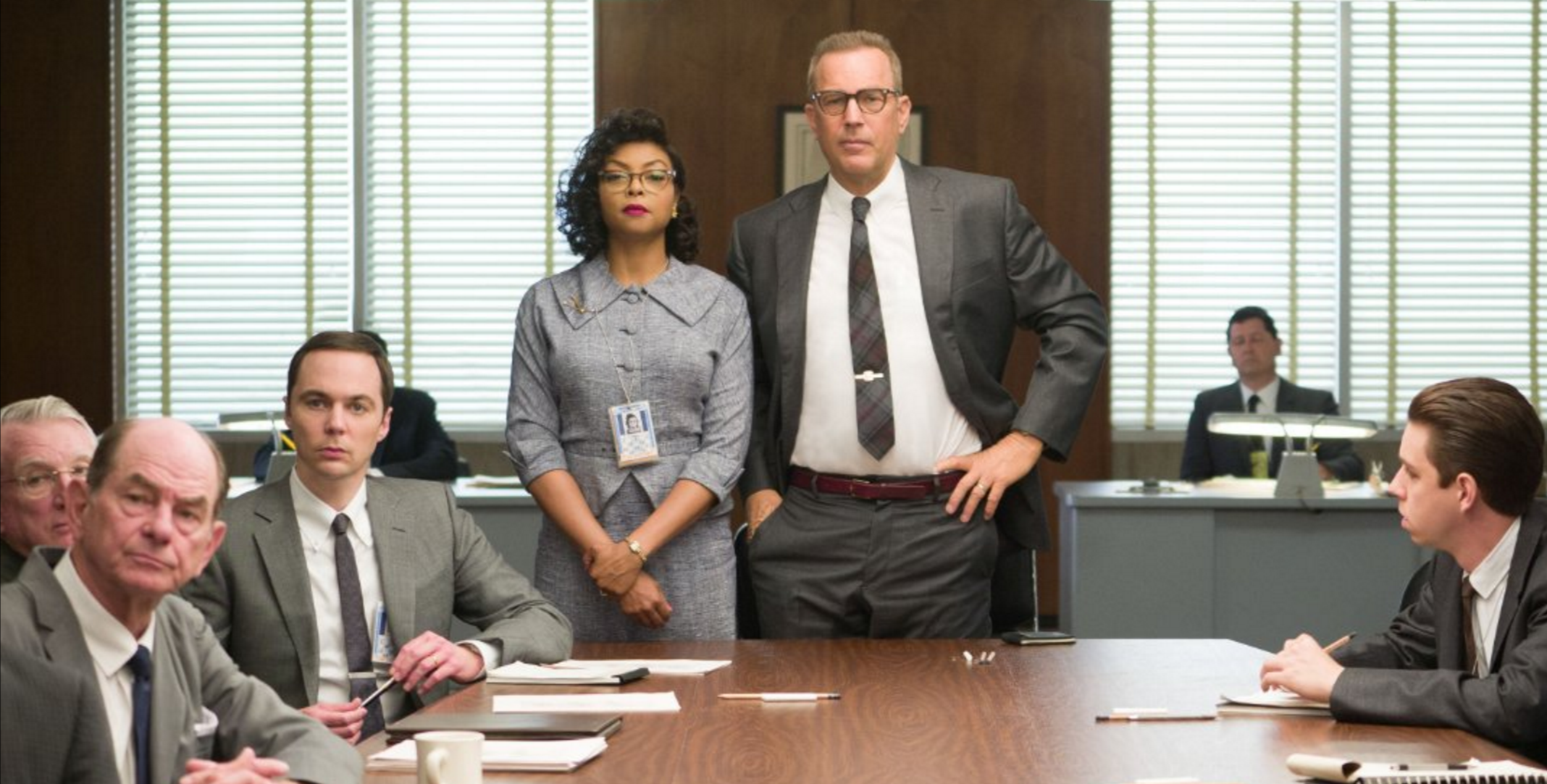HIDDEN FIGURES Review

Director: Theodore Melfi
Genre: Biopic, Drama
Year: 2016
HIDDEN FIGURES is an enlightening look into a little-known piece of of our space program’s history, and a reminder that sexism and racism were and are present no matter what profession you’re in. It’s a worthwhile story and an effective crowd pleaser, despite offering little beyond a rather simplistic take on its very complicated subject matter. Despite the bad, its box office success and best picture nomination is a sign that the film is resonating with people, so it’s likely that my disappointment is simply a mismatch of expectation and reality. Its overall message of perseverance and positivity is not without merit, but I will caution the value of the film’s payoff when several of the story’s events are crafted to fit those themes, as opposed to the other way around.
Let it be known: HIDDEN FIGURES is a crowd pleaser through and through. No negatives I find make me any less happy to have given my money to it. But that doesn’t change that it isn’t a stronger film for its simplifications. The dialogue often lacks finesse and subtext, “Here at NASA we all pee the same color” being the worst offender, and the overall style of the film seems too bright and shiny for the realities of the time. The Disney-fication of its subject matter is what’s making people so passionate, but it’s also what ultimately betrays the actual power these women displayed in real life.

Side-eyein’ the all-white creative team behind this film
The film isn’t really centered around the technical advancements required for the launch of the Friendship 7. Instead, it follows its three characters (Katherine Johnson, Mary Jackson, and Dorothy Vaughan, played by Taraji P. Henson, Janelle Monae, and Octavia Spencer, respectively) through their lives during the time frame of the mission. A disappointment for nerds like me looking to get a math history lesson, but also a decision that means the story line has to deviate and meander through Katherine Johnson’s dating life, the Red Scare, the civil rights movement, and the space program. It’s not that this can’t be done, it just has to outline the domino effect that those events all had on each other. HIDDEN FIGURES seems to pick one, maybe two issues at a time per scene, and then move on to the next issue with the next scene, resulting in a watered-down message and a clunky screenplay. Choosing to follow so many different stories only adds complexity when they’re all woven together in a cohesive three-act feature which, unfortunately, they’re not, no matter how deserving the story’s inspiration.
To add another reason to hate that “Here at NASA we all pee the same color” piece of dialogue, the event it references never even happened. The film shows several sequences of Taraji P. Henson running across NASA’s campus to use the segregated bathrooms, until she finally reveals via beautifully delivered monologue the reason for her repeated absences from her desk, at which point her boss (Kevin Costner) walks over to the colored bathrooms and hacks off its label, prompting the terrible quotation. Dramatic, yes, but the real-life Katherine Johnson confirmed in a VICE news interview that she simply used the white women’s bathroom during her tenure at NASA.

John Glenn? Yes, I was wondering how you felt about the Mercury 13 women passing an astronaut training program and then being ignored by NASA?
Director Theodore Melfi maintains that this factual liberty was warranted, as it represents the emotional effect of segregation across the United States. But it was also an easy way for Costner’s character to be the good guy, save the day, and make white people more comfortable. Melfi continues his defense by saying that it doesn’t matter who’s doing the right thing, just that the right thing is being done, which leads me to believe that he hasn’t bothered to watch his own film. My other issue here is that the narrative embellishment creates an entirely different Katherine Johnson than the one in real life. The real-life Katherine Johnson knew she was a troublemaker and simply gave her co-workers a choice: accept that I’m a black woman or lose the space race. There’s no reason to embellish a woman like that.
Obviously there’s nothing inherently bad about fictionalized stories — they can still inspire and entertain. But I think a decent test for a historical film is that if you pretend that the film isn’t based on a true story, it should still be a powerful film. HIDDEN FIGURES doesn’t pass that test, and given that failure, I’m inclined to find fault with even the smallest inaccuracies. The power behind women like this for me is not that they made these incredible advancements and then somehow experienced less racism and sexism, but that they made these incredible advancements in spite of the oppression they endured, and would continue to endure to varying degrees for the rest of their lives. That’s what makes the scientific contributions of Katherine Johnson, Mary Jackson, and Dorothy Vaughan so meaningful, not the faux-happy ending that HIDDEN FIGURES provides (Spoiler Alert: the real Katherine Johnson did not get to watch the launch from inside mission control.) And I’d prefer if people stopped acting like you can’t be just as inspired by failures or setbacks.

Speaking of terrible representations of women in STEM, Jim Parsons is in this movie
HIDDEN FIGURES isn’t an amazing film. It was hard to accept that this project wasn’t primarily about these characters as scientists, and I think if I could rewatch the film without that expectation, I would be writing a much more favorable review. And I will concede that its simplification of racism makes it more kid-friendly, and getting kids to be inspired by these women is an undeniably good thing. HIDDEN FIGURES is an enjoyable film with great acting and a few great moments, and you should see it despite its inaccuracies, because one: you’re probably less brainwashed with the need for Sorkin-esque dialogue than I am, and two: box office success is the only way I’m ever going to get a proper movie about women scientists, which is really all I want out of life since STAR TREK DISCOVERY keeps getting pushed back. So go and watch some decently-directed girl power about some truly amazing women, and then do your research.
Verdict: Recommend



